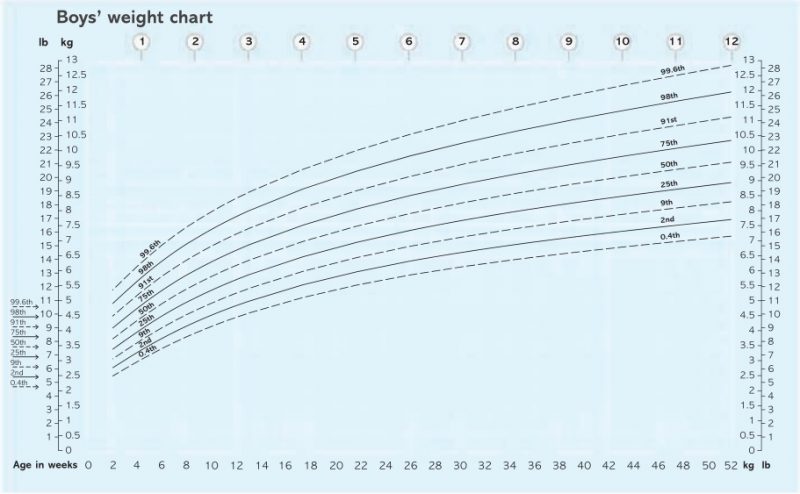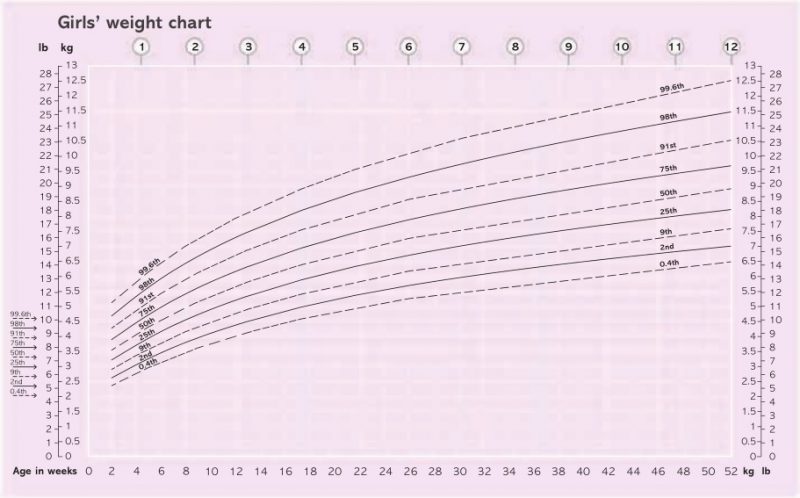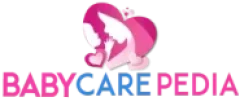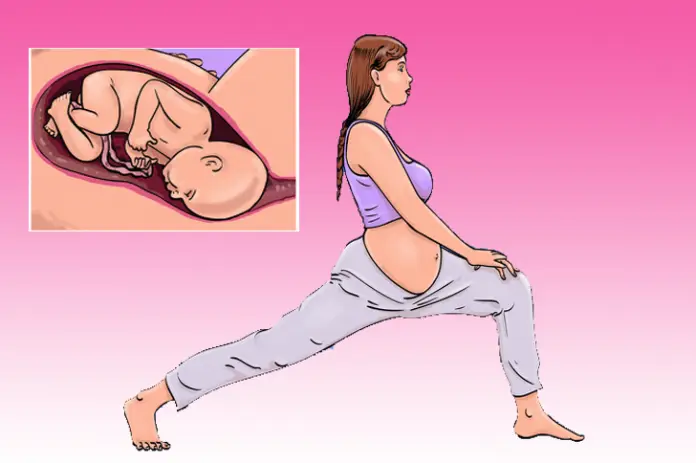In this Baby Breastfeeding Guide, you will learn how to breastfeed your baby and the basis of your baby’s diet for the first year of the baby’s life, even once they start eating solid foods.
Breastfeeding is by far the best food for your baby, with a host of benefits; but if you’re unable to lactate, bottle-feeding provides all the nutrients your baby needs.
Baby Breastfeeding Guide and Tips:
1- Breastfeeding benefits
Breast is best. A great deal of research has been done about the benefits of breastfeeding, and it’s clear that it provides the perfect start for your baby, affecting her health and development on many levels.
The composition of breast milk changes constantly, adapting to your baby’s needs.
Research shows that breastfed babies have fewer incidences of vomiting and diarrhea and that they’re protected against gastroenteritis, as well as ear infections, respiratory illnesses like pneumonia and bronchitis, kidney infections, and septicemia (blood poisoning).
There is also a reduced risk of constipation and other digestive disorders. A comfortable feeding, taking a break to burp your baby mid-feeding helps keep her comfortable and may reduce spitting up.
The best start Breastfeeding your baby gives her the best possible nutritional start in life, as well as having benefits for you too.
Compared to the fat in cow’s milk, the fat in human milk is easier for babies to digest. This means that babies can absorb more fat-soluble nutrients.
vitamins into the bloodstream from the intestine.

This is important because the brain needs essential fatty acids and healthy fats to grow and develop in a healthy way. Breast milk also promotes growth because of the presence of certain hormones.
There is a reduced risk of childhood diabetes in breastfed babies, as well as protection against allergies, asthma, and eczema. Most importantly, though, there is a reduced risk of SIDS (sudden infant death syndrome); research showed that out of every 87 deaths from SIDS, only three took place in breastfed babies.
The emotional benefits are great too, as breastfed babies enjoy a very close connection with their mothers, and skin-to-skin contact nurtures bonding.
What is a Successful Breastfeeding?
Some women adjust to breastfeeding very quickly and easily; others find that it takes a little longer, but once underway, it’s enjoyable, convenient, and usually problem-free. You can also rest easy knowing that your child will grow and develop in the best way possible.
Studies show that women who feed on demand are likely to breastfeed longer.
Feeding on demand also prevents problems with milk supply, and encourages emotional security, since you’re meeting your baby’s needs when she needs you to. It’s important to take care of yourself when you are breastfeeding.
Baby Breastfeeding Guide: Breastfeeding Baby’s First and Best Meal
Many new mothers state clearly in their birth plans that they want to breastfeed their newborn immediately after his delivery.
This is a well-intentioned request because we have good data that show that if a baby breastfeeds before being taken from the mother to be bathed after his birth, the mother has a much higher chance of successfully breastfeeding that baby.
But an even more natural way to begin the breastfeeding process is to give the newborn time to seek out his first meal by himself. Ask someone to place your newborn on your stomach before he is bathed or evaluated.
Cuddle, make eye contact, and then watch what the baby will do instinctively.
He will first begin to act hungry by smacking his lips. He will then start pushing his feet against your body to work his way up to your breast.
(I believe this is why babies are born with the stepping reflex that causes them to move their feet and legs as if they were trying to walk when something is pushed against their feet.)
He will navigate his way to your breast by following the scent of the amniotic fluid.
(The breasts secrete an oily substance containing some of the same ingredients.)
He will suck on his fists, get the scent of the fluid that is still on his skin, and then head up toward the breast by pushing, stretching, and inching his way along.
Baby Breastfeeding Guide
When he makes this journey to the breast by himself, the latch-on is much more likely to be a healthy one in which he gets the whole nipple and areola.
Breastfeeding is then far easier for both baby and mom, making it more likely that the breastfeeding attempt will be successful.
If the baby’s hands have already been washed, or if your breasts have been overly cleansed, the baby won’t be able to make the journey. That’s why it’s important to plan for this little bit of exercise in your birth plan.
This first supper is an Olympic achievement for both of you. And for most healthy babies, it’s a good reason to delay washing, eye ointment, weighing, measuring, shots, or procedures for the first hour. Just follow every step in this baby feeding guide.
Starting to breastfeed
Although breastfeeding is a natural process, there are a few “aids” to help ensure that feeding your baby runs as smoothly as possible for you both.
Good support: You’ll need at least two nursing bras, professionally fitted, if possible. Look for supportive bras with fastenings that can be opened with one hand.
Breast pumps

There is a wide variety of pumps; you may need to experiment to find which one you prefer. Electric pumps are efficient, but some find them invasive.
Nipple shields

These can be useful in the short term if you have sore, cracked, or inverted nipples, but they can make it harder for babies to get milk.
Gel pads

Absorbent gel pads soothe the nipple area if you have discomfort. Keep them in the freezer or fridge, and then pop them inside your bra after feeding.
Breast pads and creams Pads

This is helpful if your breasts leak. Choose ones without a plastic backing, which can irritate. Lanolin-based creams can help soothe sore nipples.
Feeding cushion

A V-shaped cushion is ideal for breastfeeding since it supports your back, baby, and arms. Since some feedings can last a while, comfort is a must!
Skin-to-skin contact: Close contact right after birth helps you and your baby bond and start breastfeeding. It also helps your baby’s temperature, breathing, heart rate, and blood sugar level stabilize.
Nighttime feedings:
Despite what other moms might say, all young babies need to feed at night and will continue to do so for the first few months. Keeping the lights dim and changing her diaper before feeding may help her get back to sleep afterward.
Successful Baby Feeding: Once breastfeeding is established, there can be no better or easier way to feed your baby. Most moms report an intense closeness with their babies during feeding, which helps their babies feel more secure.
Predictable routines: It will become easier to distinguish between your baby’s different cries and play with him or simply cuddle him when he needs something more than milk.
Feeding times will be more predictable, and you should be able to establish some sort of routine as your baby gains weight and establishes his own pattern, usually around four to six weeks.
Longer sleeps: The engorged and uncomfortable feeling of the early days soon settles down, as your breasts adjust to producing just the right amount for your baby.
Also, your baby will become a seasoned expert at feeding quickly and efficiently, often from both breasts in one sitting. You’ll find, too, that he goes longer between feedings, which will mean a little more sleep for you.
Settling in: Getting comfortable before feeding and relaxing for the duration make the experience more positive, and help your milk flow. Try not to worry about other things; instead, settle in and enjoy the experience of feeding your baby.
Well hydrated:
You can’t underestimate the importance of staying hydrated while feeding. Drink a glass of water each time you feed your baby. Getting enough fluids keeps you alert and helps you avoid problems like clogged ducts and mastitis.
An additional supply: Once feeding is established, you can get into the habit of expressing milk and freezing it, so that you can get out on your own when you feel that you need a break.
Public feeding: Not all women feel comfortable feeding in public, but try to remember that it’s a natural activity. There are now plenty of mother-and-baby rooms if you do want some privacy.
Growth charts for boys

Growth charts for girls

How to express and store breast milk
Many moms find that expressing themselves gives them more freedom since a dad or a babysitter can help with feeding. If you’re returning to work, expressing and storing a supply means that your baby still benefits from your breast milk.
Starting to express: There are no rights and wrongs, but consider these factors before starting to express your milk.
Get established with first milk: production is based on supply and demand, so when your baby nurses, more milk is produced to meet her needs. If you express milk regularly, your supply will increase to ensure that the same quantity is available.
It’s a good idea to wait until your milk supply is established and your baby is feeding well and regularly, and putting on weight before you start to express. Once your supply is established, you can begin to express and freeze or refrigerate your milk.
Wait a while
Your baby may experience “nipple confusion? if you offer a bottle too early, and may want to be bottle-fed if she finds this easier.
For this reason, it’s best to wait until she is baby breastfeeding well before introducing her to a bottle.
Practice with a bottle: Once you decide to give an occasional bottle, you’ll have to teach your baby how to suck from it. You can try offering her a little water daily from a bottle first so that she gets used to the different ways of feeding.
- Start manually: expressing by putting your hand about an inch or so back from your areola, and using your other fingers to cup your breast. Using your thumb and forefingers, press gently into your breast. Press and then release.
- Find a rhythm: that is comfortable for you, and, as you do so, imagine your baby. Rotate your hand around your areola, which can encourage your milk to flow. If nothing seems to work, try pressing a little farther back from the nipple.
- Have a clean bowl or sterilized bottles to collect the milk. Express each breast until the flow slows down perhaps five minutes or so then switch to the other side. You may want to go back and forth a few times.
- Label your milk with the date that it has been expressed before putting it in the freezer. It’s important to ensure that the milk stays fresh, so as soon as it’s labeled, store it in the fridge or freezer (see opposite).
Dispelling Breastfeeding Myths and the Truth
The sheer volume of breastfeeding advice you receive can be confusing, so, it’s important to be able to distinguish fact from fiction.
Here are some of the most common misconceptions
Myth #1: Babies who are breastfed very often probably aren’t getting enough milk.
Reality: The frequency of feedings is not an indicator of whether or not your baby is getting enough breast milk.
The facts: If you are feeding on demand, which many pediatricians and breastfeeding advocates recommend, then you might feel that your baby is constantly at the breast, and you may worry that he’s not getting enough milk.
But assuming you have developed a steady supply of milk, that you aren’t limiting feeding times, and that your baby is latching on to the breast correctly, it’s likely that he’s simply having a classic growth spurt.
The more you feed him, the more milk you will naturally produce for his growing appetite!
Myth #2:
If you are breastfeeding, you must always offer both breasts at each feeding for equal amounts of time.
Reality: It’s more important to let your baby finish with one breast first, even if that means she doesn’t take the second breast at the same feeding.
The facts: Each time you breastfeed, you produce different types of milk. Foremilk is the initial breast milk that a baby drinks when nursing at the beginning of a feeding. It is high in volume but low in fat and calories.
As the feeding progresses, the fat content of your breast milk increases, and it begins to more closely resemble whole milk.
Finally, toward the end of the feeding, your baby drinks hindmilk, which is the highest in calories and fat, but low in volume.
Myth #3: No spicy foods or alcohol if you are breastfeeding!
Reality: You can have a beer with your enchiladas.
The facts: If you’re consuming a healthful, balanced diet, you don’t need to be obsessive about restricting certain foods and beverages from your diet.
Even if you make poor food choices, your baby will still extract the nutrition he requires from your breast milk; but chances are you’ll feel a lot better if you eat a good diet.
Myth #04: You must drink milk to make milk.
Reality: While getting enough fluid is important, milk consumption is not essential.
The facts: While it would be nice to think that consuming large amounts of milk (especially in the form of a favorite ice cream or shake) automatically ensures a steady supply of breast milk, it’s not true.
Since you’re losing fluids when you breastfeed, it makes sense to supplement them regularly, but water will do the job, too.
If you are concerned about your calcium consumption, then by all means drink milk (fat-free or reduced-fat are the healthiest choices, and try other forms of dairy or other calcium-rich foods), but there are no set recommendations for nursing mothers on milk consumption.
Myth #05: If you develop an illness or infection or are taking medication, stop nursing.
Reality: In most such cases, there is no reason to discontinue breastfeeding.
The facts: If you develop a common infection whether it’s a breast infection (mastitis) or an illness like strep throat or a bad old there is no need to stop breastfeeding. In fact, with regard to breast infections, they clear up faster if you continue to feed with the affected breast.
Your baby probably already has the same germs that caused you to get sick, and you’re actually boosting his immunity naturally by feeding him breast milk.
Myth #06: No spicy foods or alcohol if you are breastfeeding!
Reality: You can have a beer with your enchiladas.
The facts: If you’re consuming a healthful, balanced diet, you needn’t be obsessive about restricting certain foods and beverages from your diet.
Even if you make poor food choices, your baby will still extract the nutrition he requires from your breast milk; but chances are you’ll feel a lot better if you eat a good diet.
So, is it true that if you eat garlic, onions, or cabbage, and drink liquor, your baby will have an upset tummy?
Myth #07: You must drink milk to make milk.
Reality: While getting enough fluids is important, milk consumption is not essential.
The facts: While it would be nice to think that consuming large amounts of milk (especially in the form of a favorite ice cream or shake) automatically ensures a steady supply of breast milk, it’s not true.
Since you’re losing fluids when you breastfeed, it makes sense to supplement them regularly, but with water, a breastfed baby can successfully learn to switch back and forth from breast to bottle.
(this is a practical concern for nursing mothers who go back to work and continue to breastfeed when they are home); she can also use a pacifier to satisfy her need to suck between feedings.
There is no science to suggest that pacifiers cause medical or psychological problems.
Myth #08: If you develop an illness or infection or are taking medication, stop nursing.
Reality: In most such cases, there is no reason to discontinue breastfeeding.
The facts: If you develop a common infection whether it’s a breast infection (mastitis) or an illness like strep throat or a bad cold there is no need to stop breastfeeding.
In fact, with regard to breast infections, they clear up faster if you continue to feed with the affected breast.
Your baby probably already has the same germs that caused you to get sick, and you’re actually boosting his immunity naturally by feeding him breast milk.
Myth #09: If your baby has diarrhea or is vomiting, stop breastfeeding.
Reality: You can safely nurse your sick baby.
Breastfeeding Guide: The Fact
If your baby develops a stomach bug and begins throwing up or having bouts of diarrhea, it turns out the best fluid she can ingest is breast milk.
If you have an older baby who is already taking solid foods, you may try stopping the solid foods (check with your pediatrician first) to help with the tummy problems, but don’t withhold breast milk.
Breastfeeding is very popular in some areas of the country and not so popular in other regions. If you’re leaning toward the bottle because you can’t stand the idea of turning your chest into a snack bar, try to have an open mind about the whole thing. Give it a shot. You may be surprised at how easily Baby takes to the breast, and how you really don’t mind so much after all.
Breastfeeding pros:
- You never have to mix or warm a bottle, which is a great perk when the baby cries at 2 a.m.
- It’s free.
- Very low possibility of allergic reactions.
- Studies show that breastfeeding gives a baby a permanent boost to her immune system (she gets a healthy dose of your antibodies every time she nurses).
- Breastfed babies are less likely to suffer from constipation and gas.
- It really is a sweet way to bond with your child.
Breastfeeding cons:
- It may be painful at first. When your milk comes in, your breasts might feel like hot rocks, and until your nipples are used to Baby’s sucking, they may be sore, too.
- Risk of nipple and breast infection (mastitis). If the baby is an eager little eater or isn’t latching on the right way, your nipple could develop a crack, which might allow germs from the baby’s mouth into your breast.
- You’re the sole provider of food for your child, which keeps you incredibly busy, particularly during the first few weeks, when the baby feeds at least eight to ten times per day.
- You have to watch what you eat. Strong or acidic foods, like garlic or tomatoes, may cause your milk to smell funny, which may lead to the baby’s refusal to eat. Caffeine and alcohol also enter the breast milk and limit their use as recommended while breastfeeding.
- You have to deal with leakage. Investing in some thick, cotton nursing pads and wearing dark tops can help eliminate embarrassing moments.
Conclusion
Though most doctors and as we explained in this Baby breastfeeding Guide will tell you that breastfeeding is best for a baby, it’s not always possible for a variety of reasons. If a Mom is sick after delivery, for example, she may not be able to nurse.
There’s also always the possibility of the Mom having inverted nipples (which make it extremely difficult for the baby to latch on) or simply not producing enough milk.
Not to worry. Baby can get all of the nourishment she needs from a bottle of formula.





1 thought on “Baby Breastfeeding Guide And Growth Charts”
Comments are closed.